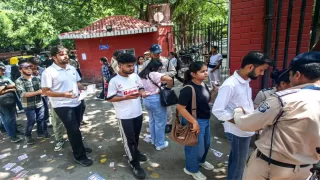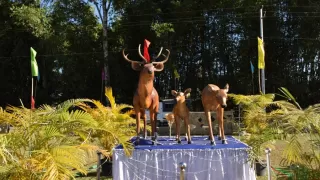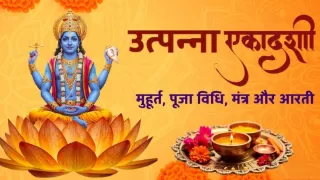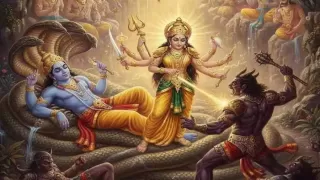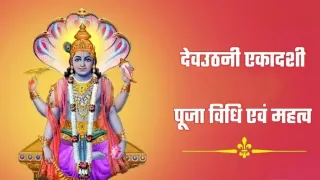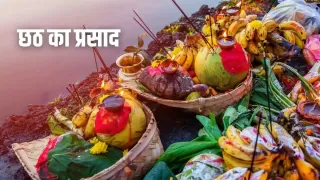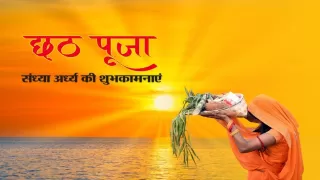Diwali, the renowned ‘festival of lights,’ is a celebration of light prevailing over darkness and wisdom over ignorance. This year, Diwali will be observed on October 31, with Chhoti Diwali or Narak Chaturdashi falling on the evening of October 30. This multi-day celebration begins with Dhanteras and concludes with Bhai Dooj, filling the air with joy, rituals, and festivities.
Diwali’s Cultural Significance
Diwali is observed on the 15th day of Kartik, the darkest night in the Hindu lunar calendar, symbolizing the triumph of good over evil. The lighting of diyas (oil lamps) and decorations mark the journey from darkness to light, representing knowledge’s victory over ignorance.
Diwali Festival 2024

Image Source: Twitter
Here is a complete schedule of the Diwali festivities this year, highlighting each day’s rituals and muhurat timings:
1. Govatsa Dwadashi - October 28
Govatsa Dwadashi marks the official start of Diwali celebrations. People worship cows and calves, symbolizing purity and nurturing. The date varies by region, and the muhurat timing is based on individual traditions.
2. Dhanteras - October 29
Dhanteras, dedicated to the goddess of wealth, marks the first official day of Diwali. Many people buy gold, silver, or household items, as it is believed to bring prosperity. The puja muhurat on Dhanteras will be from 6:31 pm to 8:13 pm on October 29.
3. Chhoti Diwali (Narak Chaturdashi) - October 30
On the eve of Diwali, Chhoti Diwali celebrates the defeat of the demon Narakasura by Lord Krishna, symbolizing the removal of evil and darkness. Known also as Narak Chaturdashi, the day is marked by lighting small diyas, decorating homes, and performing cleansing rituals.
- Muhurat for Abhyang Snan: 5:20 am to 6:32 am on October 31
- Chaturdashi Tithi: Begins at 1:15 pm on October 30 and ends at 3:52 pm on October 31
4. Lakshmi Puja and Main Diwali - October 31
The main day of Diwali, dedicated to Goddess Lakshmi, is the highlight of the festival. Families worship Lakshmi, the goddess of wealth, in hopes of inviting prosperity and fortune.
- Lakshmi Puja Muhurat: 5:36 pm to 6:16 pm
- Pradosh Kaal: 5:36 pm to 8:11 pm
- Vrishabha Kaal: 6:20 pm to 8:15 pm
- Amavasya Tithi: Begins at 3:52 pm on October 31 and ends at 6:16 pm on November 1
5. Govardhan Puja - November 2

Image Source: Twitter
Govardhan Puja, also known as Annakut, celebrates Lord Krishna lifting the Govardhan Hill to protect the people of Gokul. On this day, families offer prayers, food, and gratitude to Krishna.
- Pratahkal Muhurat: 6:34 am to 8:46 am
- Sayankal Muhurat: 3:23 pm to 5:35 pm
- Pratipada Tithi: Begins at 6:16 pm on November 1 and ends at 8:21 pm on November 2
6. Bhai Dooj - November 3
The festival concludes with Bhai Dooj, honouring the bond between brothers and sisters. Sisters pray for their brothers' long and prosperous lives by performing rituals and applying ceremonial tikka on their foreheads.
- Aparahna Muhurat: 1:10 pm to 3:22 pm
- Dwitiya Tithi: Begins at 8:21 pm on November 2 and ends at 10:05 pm on November 3
Why Celebrate Chhoti Diwali?
Chhoti Diwali serves as a prelude to the main Diwali celebrations. It prepares devotees spiritually for Lakshmi Puja, marking the victory of light, good deeds, and purity over evil, much like how Diwali itself celebrates Lord Rama’s victory over Ravana.
Also Read: 10 Beautiful Rangoli Designs for a Diwali 2024 Celebration














